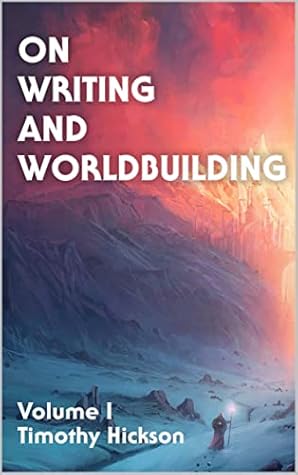More on this book
Community
Kindle Notes & Highlights
What information might you communicate: problem-s...
This highlight has been truncated due to consecutive passage length restrictions.
One type of necessary exposition is problem-sol...
This highlight has been truncated due to consecutive passage length restrictions.
Isaac Asimov’s Three Laws of Robotics,
A robot may not injure a human being or, through inaction, allow a human being to come to harm. A robot must obey orders given to it by human beings except where such orders would conflict with the First Law. A robot must protect its own existence as long as such protection does not conflict with the First or Second Law.
Star Wars: The Phantom Menace. Qui-Gon Jin explains to young Anakin:
This is also an example of the unknowledgeable perspective character we discussed before, who is meant to ask the questions that the reader or viewer is,
What information might you communicate: motivational exposition
Now, the author might know the backstory of a character, but that does not mean the reader has to know it.
Harry Potter series, whose backstory is only revealed in the final book when it becomes truly relevant to the reader’s comprehension of the narrative.
What information might you communicate: exposition you wish to include
Respect your audience
Readers are smarter than we give them credit for. A lot of good exposition tells the story implicitly through conflict and environmental descriptions.
When might you communicate exposition
Intrigue vs. relatability
This is because revealing backstory exposition earlier in the story is one method to help the reader empathise with the character, which most authors wish to do with their protagonists.
Plot twists
This makes it more memorable than it otherwise would be, because the main feature of the scene is not the exposition but the demonstration of that exposition.
The first chapter
The reason is relatively obvious to most people: it is difficult to care about a world or society, or remember a magic system, unless the reader is given some context in which to care about it.
Multiple characters
Summary
the unknowledgeable perspective character is one way to communicate your exposition logically, but that doesn’t make it interesting or memorable,
placing obstacles and mystery between the main character and the exposition makes the exposition feel more like a payoff,
the Pope in the Pool method aims to distract the reader from the exposition. This can be done by placing it in a context that helps characterisation, in a shocking environmental description, or in a dramatic scene with conflict.
not all worldbuilding needs to be communicated, but it is important to communicate problem-solving exposition that controls tension in the narrative.
it can be important to communicate exposition that explains why characters act a certain way, making them more relatable.
respect your audience—they will read through the lines in your descriptions, interactions, and dialogue.
plot twists before or after the exposition are a great way to make exposition more memorable.
it is generally better to avoid first-chapter exposition, and use that as a means to establish an immersive context for the exposition to be given in later.
PART IV
FORESHADOWING
In its simplest form, foreshadowing is using scenes earlier on in the story to build anticipation or understanding of events later in the story.
The pre-scene
A pre-scene is where a smaller version of a much more important moment happens earlier on.
Irregular description
This is where the author descriptively highlights something that would not usually be examined, choosing to give it more detail that it would usually be given.
For example, that statement about Harry’s scar is preceded by this phrase: “Harry had a thin face, knobbly knees, black hair, and bright green eyes.” None of these things are pointed to as particularly important, because they are given in a list with no phrasing that distinguishes them.
Chekhov’s Gun
Chekhov’s Gun is the principle that if something becomes consequential later in the story, then it should hold a foreshadowing presence earlier on;
This means it doesn’t feel like a deus ex machina when it is used later on to resolve conflict.
Symbolism
in G.R.R. Martin’s A Game of Thrones, where the Starks chance across a direwolf who died killing a stag—the two respective symbols of House Stark and House Baratheon.
External symbols are ones we use in real life, like the figure eight meaning infinity.
Internal symbols are ones from within the world the author has built,
Irregular action
This is where a character acts in a way that is inconsistent with their characterisation beforehand, causing the reader to wonder why.
Other methods of foreshadowing
These tend to be clever turns of phrase that a reader notices only on second reading.
Narrative structure, tone, and payoffs
Narrative structure


